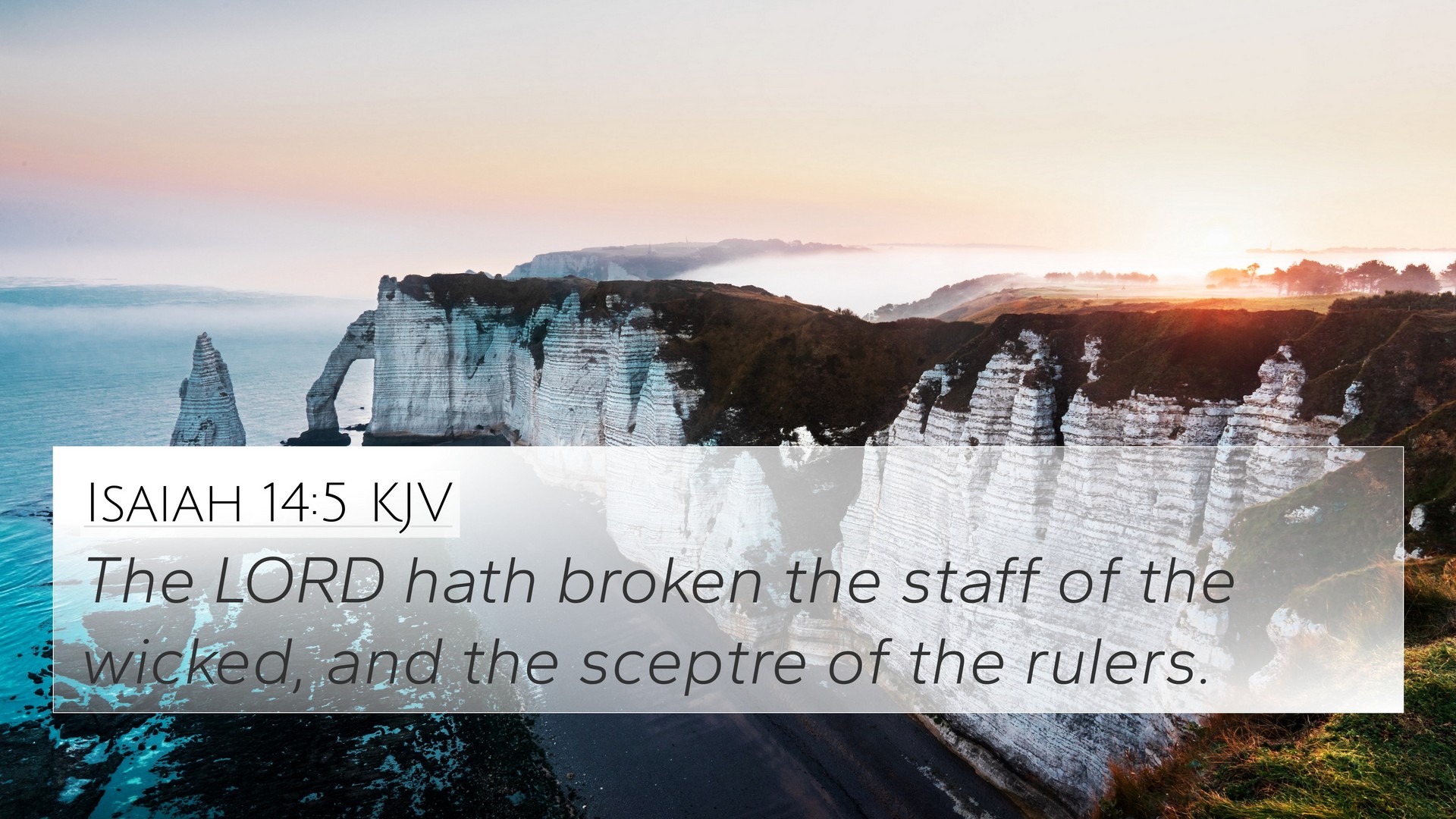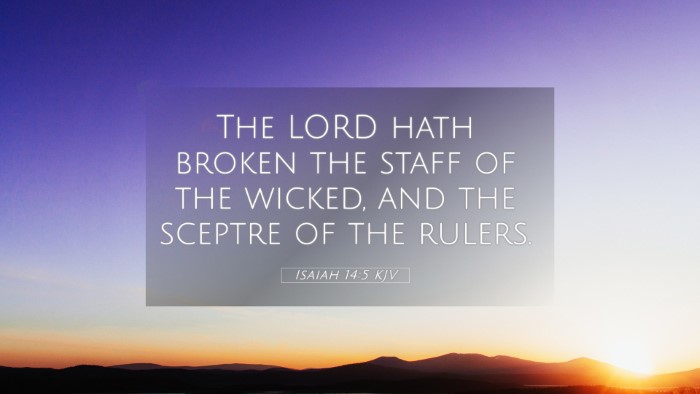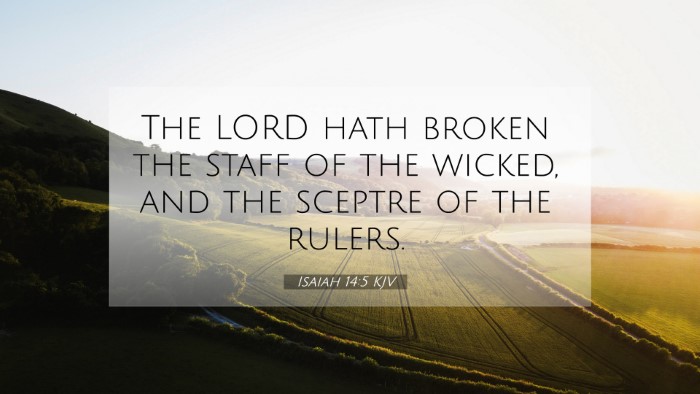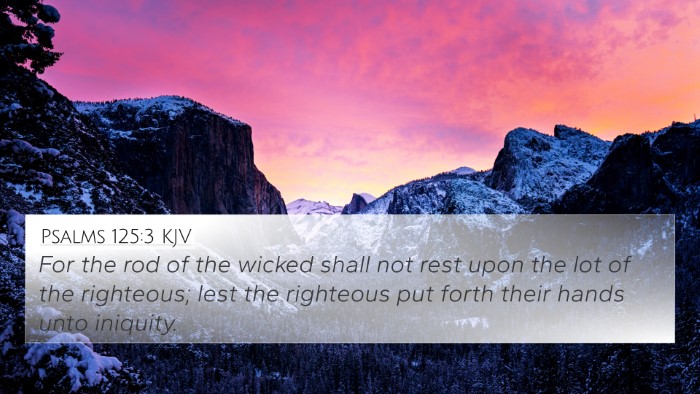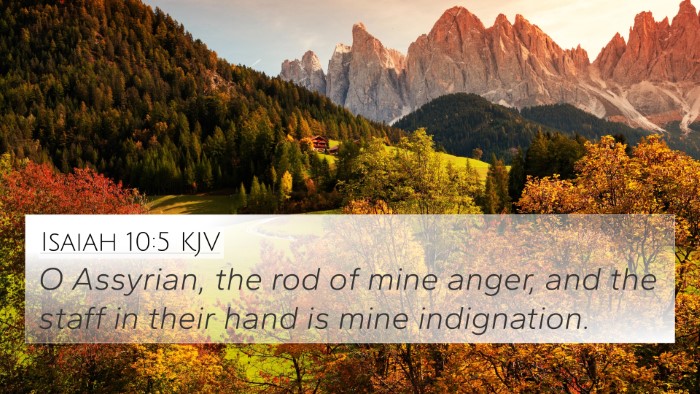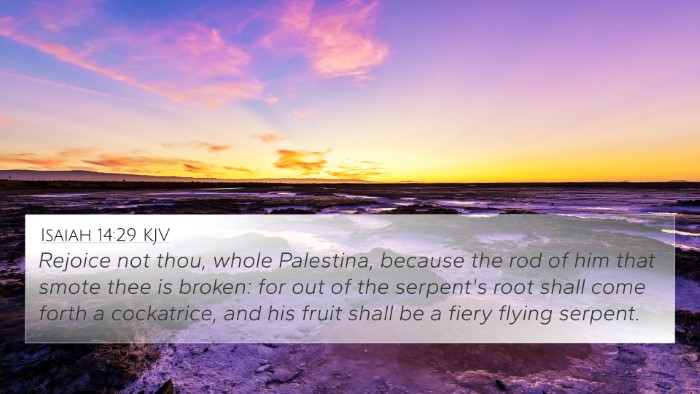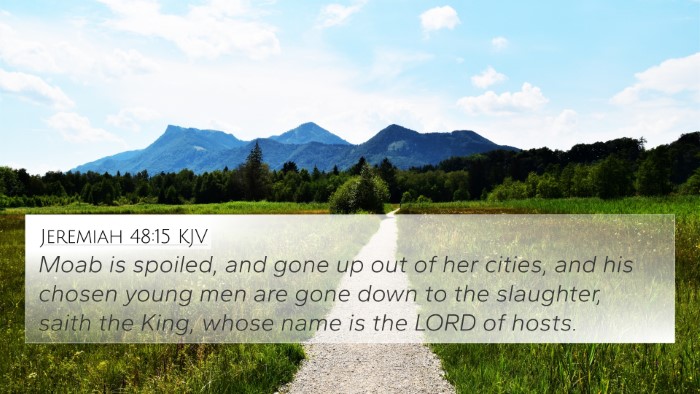Understanding Isaiah 14:5
Isaiah 14:5 states: “The LORD has broken the staff of the wicked, the scepter of the rulers.” This verse encapsulates the theme of divine justice triumphing over oppression and tyranny. In examining this scripture, we can draw insights from several public domain commentaries, including those by Matthew Henry, Albert Barnes, and Adam Clarke.
Meaning and Interpretation
This verse comes as a proclamation of God’s authority over earthly powers and the eventual downfall of the wicked. It is pivotal to understand that Isaiah, through this declaration, performs a dual function: it serves both as a word of comfort to the oppressed and a warning to those who abuse power.
Key Insights from Commentaries
- Matthew Henry: Henry emphasizes that this prophecy addresses the downfall of Babylon, symbolic of oppressive governments. He portrays God’s judgment as the act of breaking the ‘staff’ and ‘scepter’, metaphors for the ruling power of tyrants.
- Albert Barnes: Barnes highlights the divine intent behind the destruction of wicked rulers. He states that the ‘staff of the wicked’ signifies a support that God will remove, leading to a collapse of their authority. His commentary points to the overarching theme that God’s justice reigns supreme.
- Adam Clarke: Clarke interprets this verse as a reassurance to the Israelites that their suffering under Babylonian rule will not last forever. He discusses the significance of ‘the staff’ and ‘the scepter’, indicating that these symbols represent both strength and leadership that will eventually be dismantled.
Bible Cross-References
Understanding this verse is enhanced by cross-referencing it with various biblical scriptures that share similar themes:
- Psalm 125:3: “For the scepter of wickedness shall not rest on the land allotted to the righteous.” This mirrors the message of divine protection for the faithful against oppressive rulers.
- Proverbs 22:8: Highlights the fate of malicious actions, emphasizing that those who sow injustice will reap destruction.
- Isaiah 10:5: Describes Assyria as the rod of God's anger, indicating that God uses nations for His purposes and will ultimately judge them.
- Revelation 19:15: Portrays Christ as wielding a sharp sword, symbolizing His power to judge and rule justly.
- Zechariah 10:11: Illustrates the breaking of the yoke of oppression, linking back to the core message that God will liberate His people.
- Jeremiah 51:20: Refers to God's people as weapons of war against the oppressive Babylon, affirming the theme of divine intervention.
- Luke 1:52: In Mary's song of praise, it parallels the lifting of the humble and the cast down of the proud, resonating with the message of restoration.
Thematic Connections
These references encourage us to explore deeper thematic connections within the bible that enhance understanding of Isaiah 14:5:
- The theme of divine justice as a recurring motif in scripture.
- The promise of restoration for the oppressed throughout the biblical narrative.
- The contrast between God’s authority versus human authority as presented in both Old and New Testaments.
Conclusion
The study of Isaiah 14:5 alongside its thematic connections and cross-references provides a rich understanding of God's sovereignty over earthly powers. As believers, this verse serves as a powerful reminder of the ultimate victory of righteousness over wickedness, cementing the hope that resonates throughout the biblical texts.
Tools for Further Study
For more in-depth exploration, consider utilizing:
- Online Bible concordances for cross-referencing.
- Study guides that provide insights into thematic bible verse connections.
- Comprehensive resources dedicated to biblical cross-referencing.
User Intent Queries
Some common queries that can help in understanding Isaiah 14:5 further may include:
- What verses are related to Isaiah 14:5?
- How do Isaiah 14:5 and Revelation 19:15 connect?
- Similarities between Isaiah 14:5 and Luke 1:52.
- Find cross-references for Isaiah 14:5.
